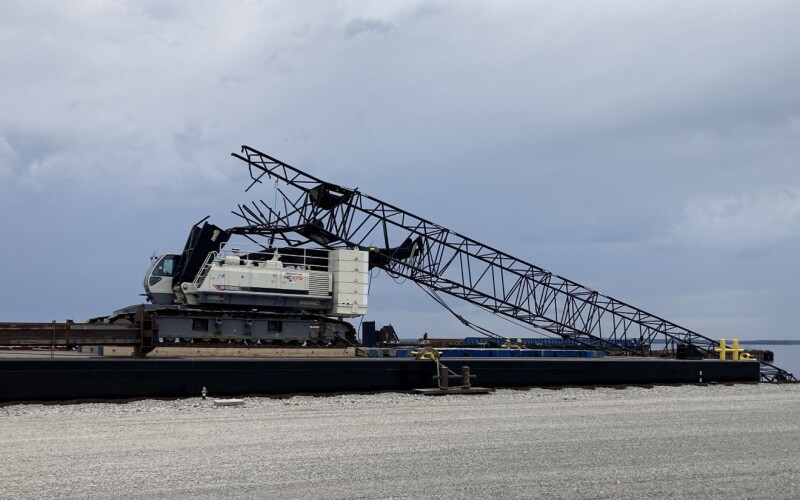A miscalculation by a towing vessel’s crew and managers led to a crane striking the Mackinac Bridge in Michigan’s Straits of Mackinac on May 7, 2023, according to a report released by the National Transportation Safety Board (NTSB). The incident caused $145,000 in damage to the bridge and $665,000 in damage to the crane, though no injuries nor pollution were reported.
The towing vessel Nickelena was transporting a deck barge carrying a crawler crane with a 160’-long boom and a 5’ “rooster” sheave attachment to a construction site in Sault Ste. Marie. Before departure, company managers visually estimated the crane boom’s angle to be between 50° and 60° but did not conduct precise measurements. Based on this rough estimate, they assumed the boom’s height was safe for transit under the Mackinac Bridge.
However, the actual boom angle was 62°, resulting in a height of approximately 162’ above the water—nearly 10’ higher than the bridge’s 153’ vertical clearance at the time. As a result, the boom struck the main span, bending backward and eventually collapsing onto the aft end of the barge.
The NTSB report noted towing vessel operations are required to have a towing safety management system (TSMS), which includes voyage planning to assess navigational risks. While Basic Towing Inc., the vessel’s owner, had a TSMS in place, there was no documentation of a navigation assessment before departure. Investigators found that the captain relied on the company managers’ assurances that the tow was “ready to go” and did not take additional steps to verify clearances.
The NTSB determined the probable cause of the accident was ineffective voyage planning by both the captain and barge company managers, who failed to identify the crane’s excessive height.
“For vessels and tows with high air drafts, such as crane barges, bridges pose a risk of overhead contact,” the NTSB report stated. “Operators should ensure they have the most accurate and objective data about the crane and bridge heights before getting underway.”
The agency emphasized the importance of consulting navigational resources, such as the U.S. Coast Pilot and official navigational charts, to verify air drafts and bridge clearances before transit.
The full NTSB Marine Investigation Report 25-02 can be found here.




